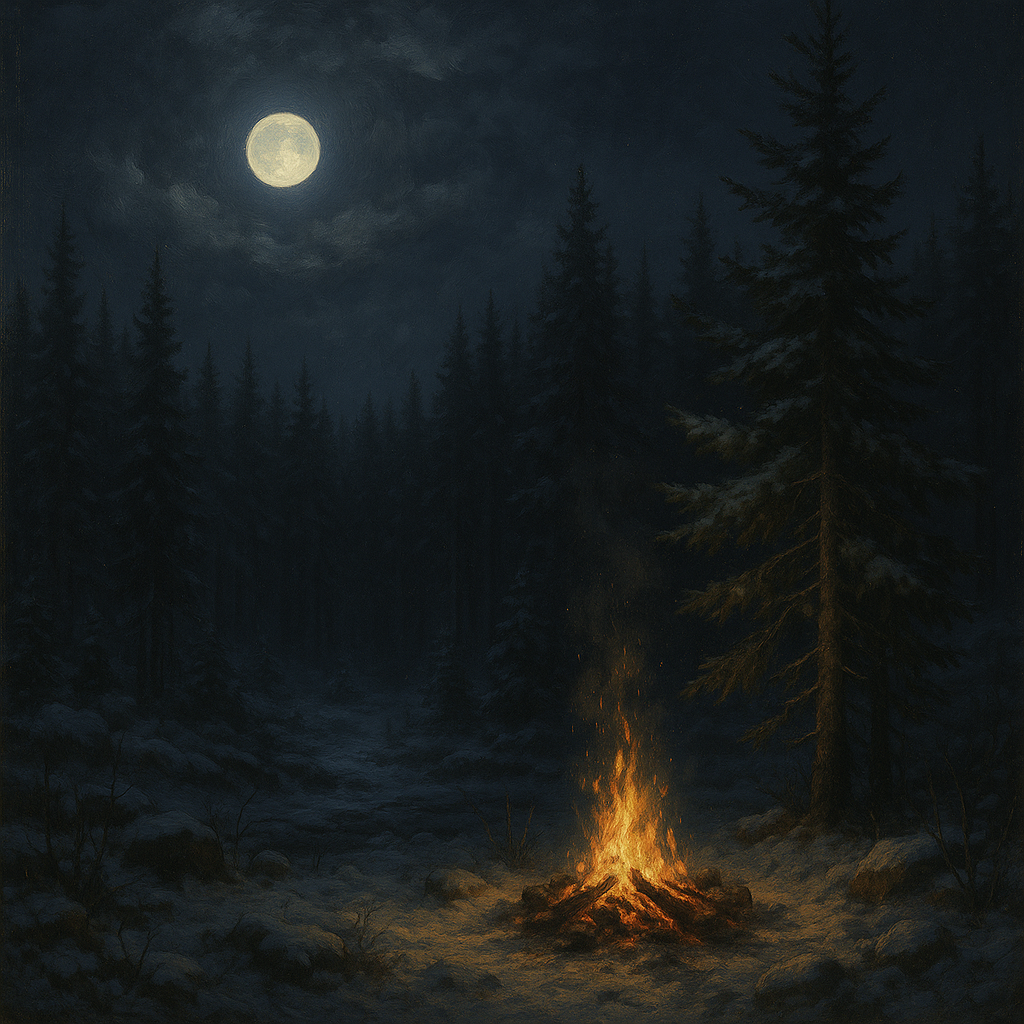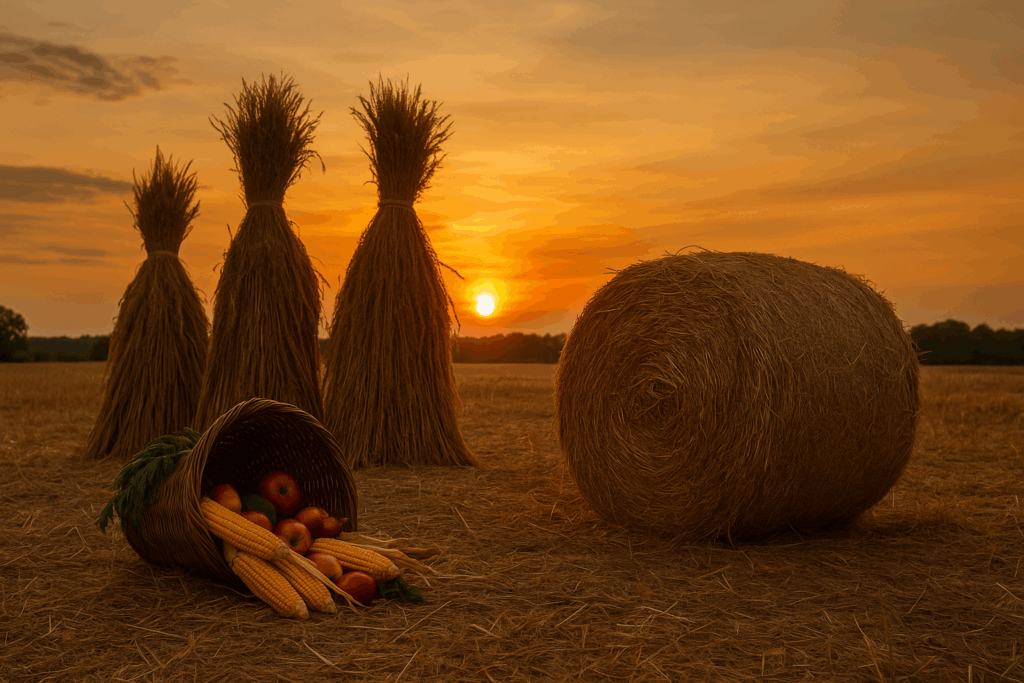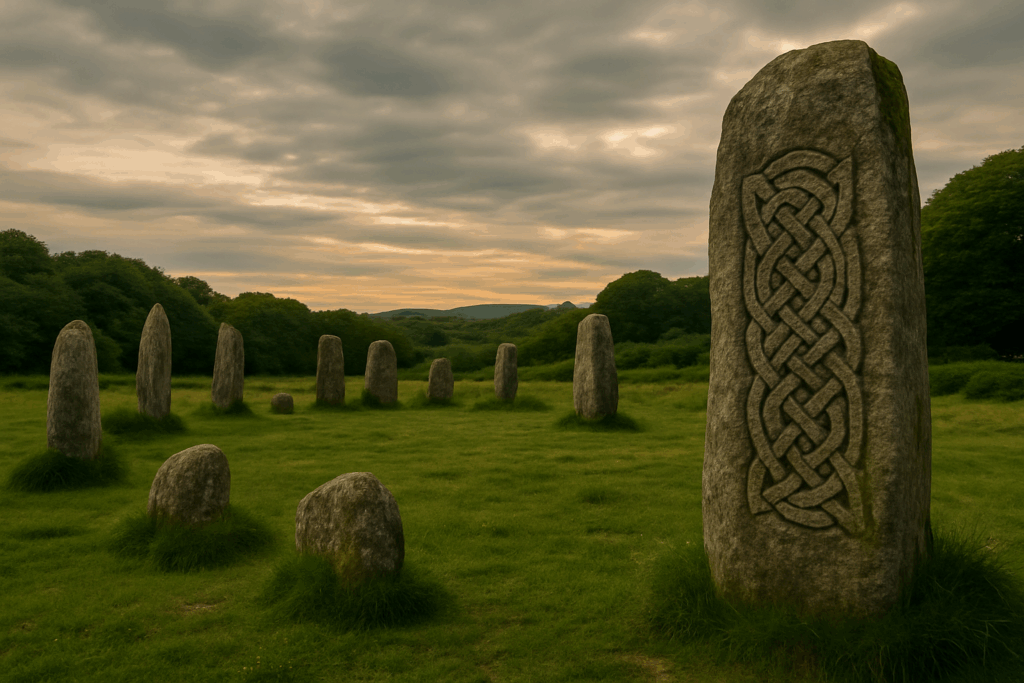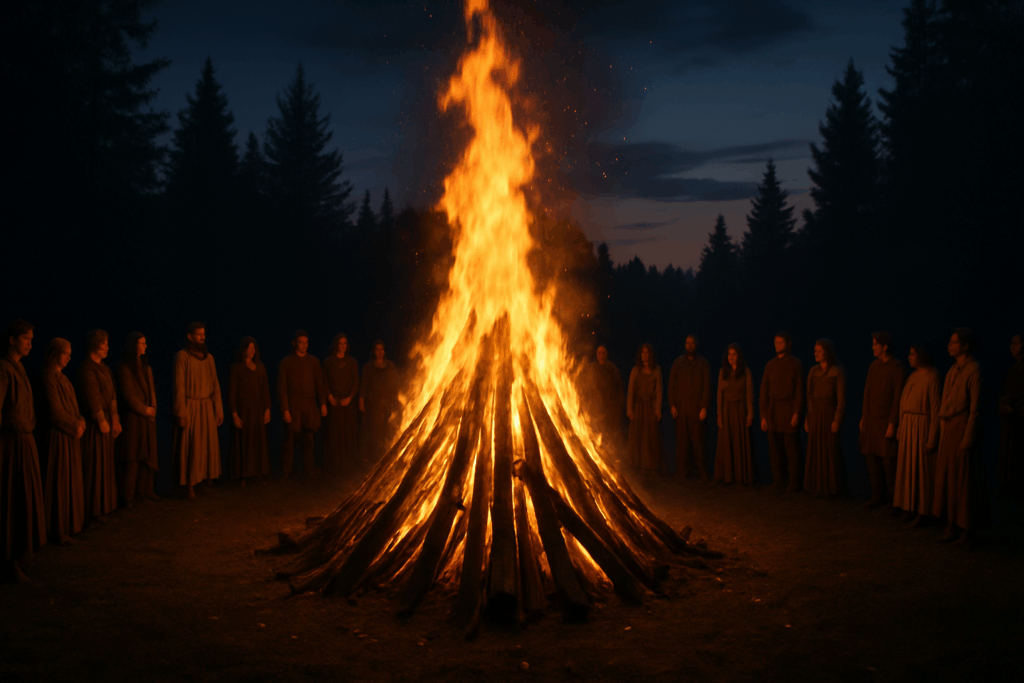🌑 November 5 – Smoke of the Old Year

Fire magic for release, renewal, and gratitude.
There is something sacred in the scent of smoke rising into the cold November air — a thin, twisting column that bridges earth and sky, visible prayer made of breath and ember. The festival fires of Samhain have faded, yet their echoes linger, curling upward from hearths and bonfires alike, carrying with them the final whispers of the old year. On November 5, we honor this moment as Smoke of the Old Year — a day devoted to release, to purification by flame, and to gratitude for all that has been. The smoke becomes our offering, our surrender, and our transformation.
In many traditions, the beginning of November marked not only the Celtic Samhain but the turning of the agricultural and spiritual year. The harvest complete, the fields resting under frost, humanity turned inward to reckon with what the cycle had brought — its gains, its losses, its lessons. Fire, the great purifier, became the medium of this reckoning. Through it, people burned offerings, prayers, and remnants of the past: old charms, worn tools, even symbols of regrets or burdens carried through the seasons. The smoke was believed to rise as a messenger, carrying gratitude to the gods and ancestors, transmuting heaviness into light. In this way, the end of the year was not only a closure but a cleansing — a return to essence through the alchemy of flame.
Smoke of the Old Year is thus an act of mindful release. It is a time to look back over the months behind you, to honor what has shaped you and to let go of what must now return to the elements. The fire does not judge; it transforms. To feed it is to engage in sacred reciprocity — we give it the old, and it gives us renewal. Gather a small flame, whether a bonfire, a candle, or the gentle hearthlight, and sit with it in reflection. Write down what you are ready to release: griefs that have lingered too long, habits that drain your energy, fears that no longer protect you. When you are ready, offer these words to the flame. Watch as they curl into smoke, their forms dissolving into the cool night air. As they rise, whisper thanks — for even what pained you has taught you something vital. Gratitude completes the transformation; it is the balm that ensures no ash clings bitterly to the heart.
Smoke has always been a language of its own. In the rituals of ancient peoples, smoke carried invocations upward to the divine. Shamans used it as a bridge between worlds; oracles read its movement as omen. In Celtic tradition, the sacred fire of purification was known as the need-fire — a blaze kindled without flint, using friction between woods of specific trees, often ash or oak. This pure fire, untainted by past flame, was believed to cleanse the land and protect the people. On Smoke of the Old Year, you might honor this idea by kindling a new flame intentionally — perhaps by lighting a candle from a fresh wick rather than a lingering ember, symbolizing rebirth and renewal. Let its smoke rise as the breath of the old year’s spirit, ascending peacefully to the sky.
As the fire burns, reflect not only on what you release but also on what you carry forward. The smoke is not only an ending but a continuum — a reminder that nothing is truly lost, only changed. The molecules of what burns become part of the air, part of the breath of the world. So too with memory and experience: what we let go of returns to us in subtler form, distilled into wisdom. The old year’s smoke mingles with the new year’s wind, weaving the tapestry of continuity. In this way, fire becomes teacher and mirror, showing us that destruction is never final but cyclical, creative.
Gratitude lies at the heart of this ritual. It is easy, in the season of waning light, to focus only on what has been taken — the fading warmth, the fallen leaves, the quiet of empty fields. Yet the fire teaches us to be grateful even for the ashes, for they are the ground of future flame. To sit with gratitude before the fire is to see life as whole, not divided into gain and loss but unified through transformation. Think of all the unseen hands that carried you to this point — ancestors, friends, teachers, even strangers whose brief presence altered your path. Let the smoke be your thank you to them, rising skyward in soft curls. Speak aloud, if you wish, the words: “For all that was, I give thanks. For all that remains, I give care. For all that is yet to come, I open my heart.”
In the folk magic of northern Europe, it was common to carry burning brands or torches from the year’s final bonfire through the village, wafting smoke over doors and fields for blessing. The smoke was seen as spirit made visible — capable of cleansing, protecting, and consecrating. You can mirror this practice simply by walking through your space with incense, resins such as frankincense or myrrh, or native herbs like juniper and mugwort. As the smoke moves, imagine it sweeping away stagnant energy, opening pathways for renewal. Each room becomes a vessel of clear air and possibility. This act is not superstition; it is symbolic prayer, a conversation between breath and flame, human and elemental.
There is also profound symbolism in the way smoke rises yet disperses — never lingering in one place, never clinging to what it leaves. It reminds us that true release means freedom, not erasure. To release something does not mean to forget it, but to allow it to change form, to integrate its lesson without holding its pain. The smoke drifts away not because it rejects the fire, but because it fulfills it. So too, when we release the old year, we are not discarding our past but freeing it to become part of our future in transmuted form.
On a psychological level, the Smoke of the Old Year mirrors the human need for closure — not in the sense of forgetting, but of consecrating what has been. Ritual acts like these externalize inner transitions, giving shape to invisible processes of grief and growth. Fire provides both focus and release; it gives us something tangible to witness as we move through intangible change. Watching the smoke rise, we are reminded that our inner landscape mirrors nature’s own — cycles of burning and renewal, of shedding and reemergence.
In mythic consciousness, the smoke is also the breath of the ancestors. As it rises, it carries messages between realms. The Celts believed that the veil remained thin for days after Samhain, allowing communication not just through words but through elemental signs. To gaze into the smoke, then, is to listen for subtle guidance — a wordless knowing that arises when the mind quiets. You may see shapes, hear thoughts that seem not your own, feel warmth that feels like presence. Whether or not one believes in literal spirits, these moments speak to a deep truth: that memory itself is a spirit, and through ritual we keep it alive.
When the flames fade and only the faint wisps of smoke remain, take a moment to sit in stillness. The air will smell of char and earth, a mingling of endings and beginnings. Feel the way the smoke lingers in your hair, on your clothes — the tangible mark of transformation. You have participated in an ancient act of renewal, one that connects you not only to your ancestors but to the timeless rhythm of the world itself. In your own breath, you carry a trace of that smoke forward. In that breath, the old year still whispers, “Thank you.”
As night settles fully and the last ember dims, you may notice a curious peace — not emptiness, but completion. The smoke has carried your offerings skyward; the air is clear again. The circle of release has closed, and a new space has opened within you. In that space, the spark of gratitude glows — small but steady, the heart’s own flame. That is the true gift of the Smoke of the Old Year: not the fire itself, but what remains after it — the clarity, the humility, and the quiet faith that life, like smoke, always finds its way to light.





